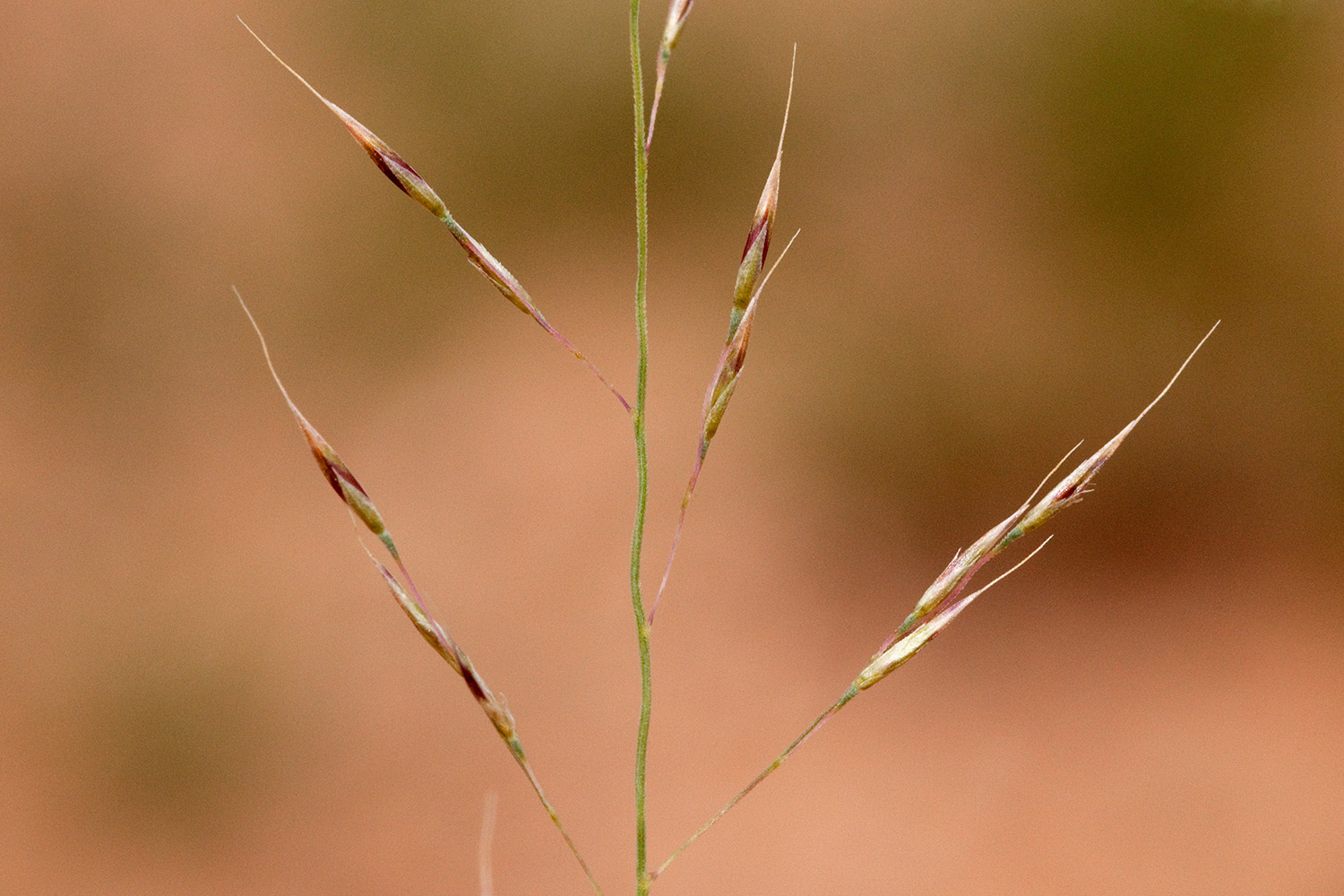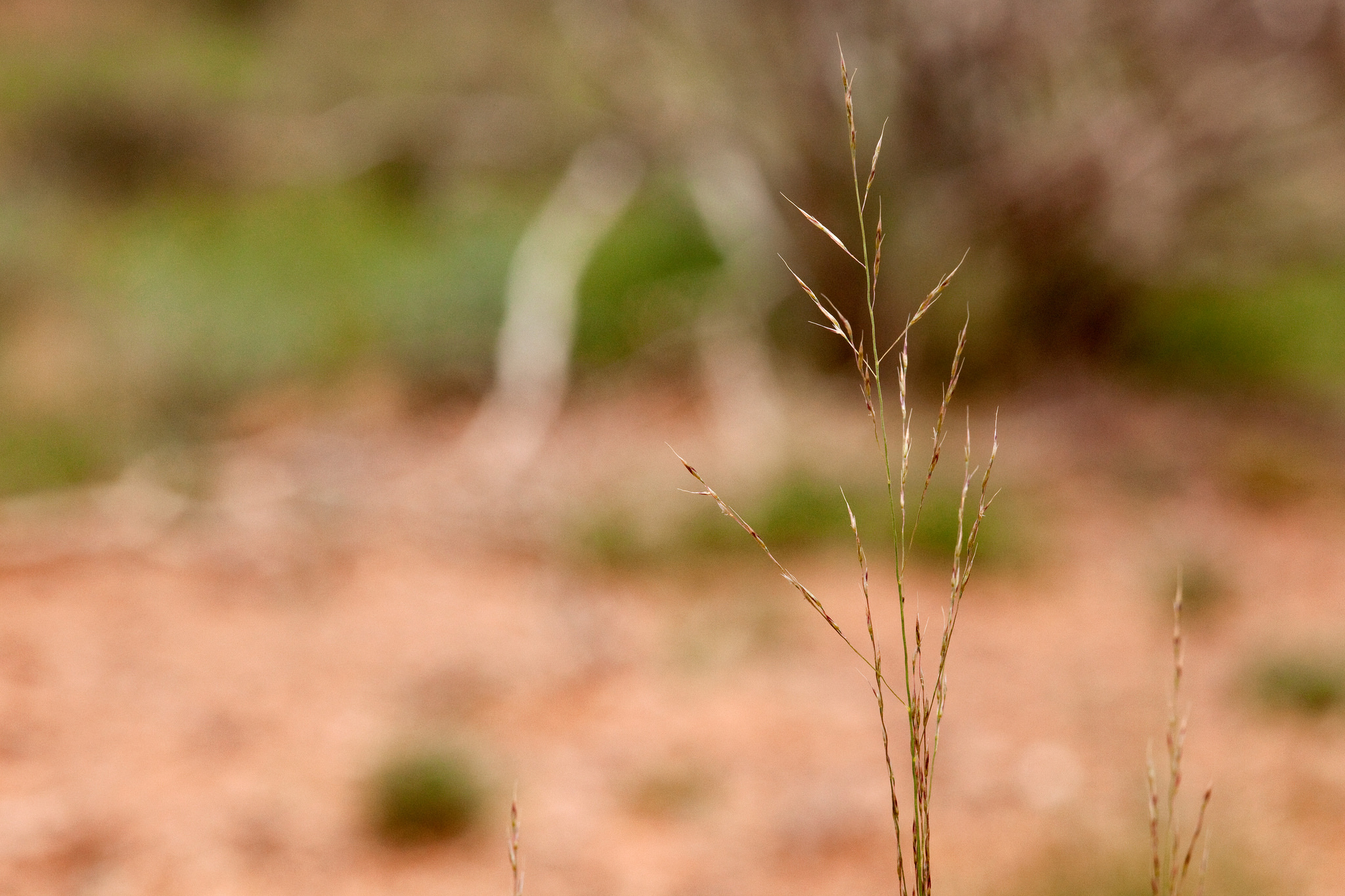Selected Plants of Navajo Rangelands
Muhly, ring
Bé’ézhóó’łichií’í

Ring muhly is a low-growing, fine-leaved, fine-stemmed sodgrass. It tends to grow in rings, which are caused by the center dying out as the plant enlarges. The rings may range in size from several inches to a few feet across.
It appears green to bluish-green, reddish, or purplish. It flowers from July to September on dry ridges, sandy plateaus, and rocky slopes between 4,000 and 7,000 feet. Even when ring muhly is young and growing rapidly, its palatability is low. As the plants mature, palatability drops almost to zero.
Ranges with ring muhly should be managed with other grasses as key species. Continued attempts to obtain even a moderate amount of grazing from the grass will in time drive out all of the desirable forage species and result in consistent weight losses in the animals being grazed. Ranges with an abundance of this grass should be rested during the summer rainy season.


Copyright 2018 New Mexico State University. Individual photographers retain all rights to their images. Partially funded by the Western Sustainable Agriculture Research and Education Program (westernsare.org; 435.797.2257), project EW15-023. Programs and projects supported by Western SARE are equally open to all people. NMSU is an equal opportunity/affirmative action educator and employer.
NMSU does not discriminate on the basis of age, ancestry, color, disability, gender identity, genetic information, national origin, race, religion, retaliation, serious medical condition, sex (including pregnancy), sexual orientation, spousal affiliation or protected veteran status in its programs and activities as required by equal opportunity/affirmative action regulations and laws and university policy and rules. For more information please read the NMSU Notice of Non-discrimination.

